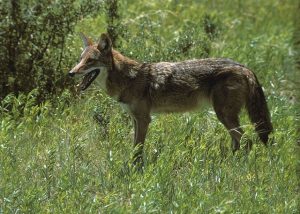Wild Dogs in the City
This is Passport to Texas
Coyotes are widespread throughout Texas.
In any county, in any city, in any suburb—there’re going to be a few coyotes.
Texas Parks and Wildlife urban wildlife biologist Kelly Simon says we have abundant data on rural coyotes, but less on urban coyotes.
In urban areas they act a little differently. And so, we’re hoping to get an idea of not only the home ranges, for example, but also what prey items they might consume, and also what they might show us about the toxins that might be in the environment.
Toxins such as poisons we use to kill rats—primary prey of coyotes. TPWD is undertaking a year-long study of urban coyotes with Huston Tillotson University in Austin.
So, one of the things that the students at Huston Tillotson are looking at are the presence of toxins in the blood of the coyote, as well as in the fur and the footpads of the coyote.
Students trap, test and place radio collars on the animals.
So, we have the traps monitored with a device that sends out a text message and lets us know that an animal has been snared. Our goal is to get to the trap within 30 minutes, so the animal is immobilized for no more than 30 minutes in the field.
Better data means improved management strategies. This spring, we’ll follow students and teachers into the field as they work with the coyotes, and feature their work on our new podcast Under the Texas Sky.
The Wildlife Restoration program supports our series.
[W-190-R-1]
For Texas Parks and Wildlife…I’m Cecilia Nasti.



 Passport to Texas is a
Passport to Texas is a  Passport to Texas is made available by:
Passport to Texas is made available by: